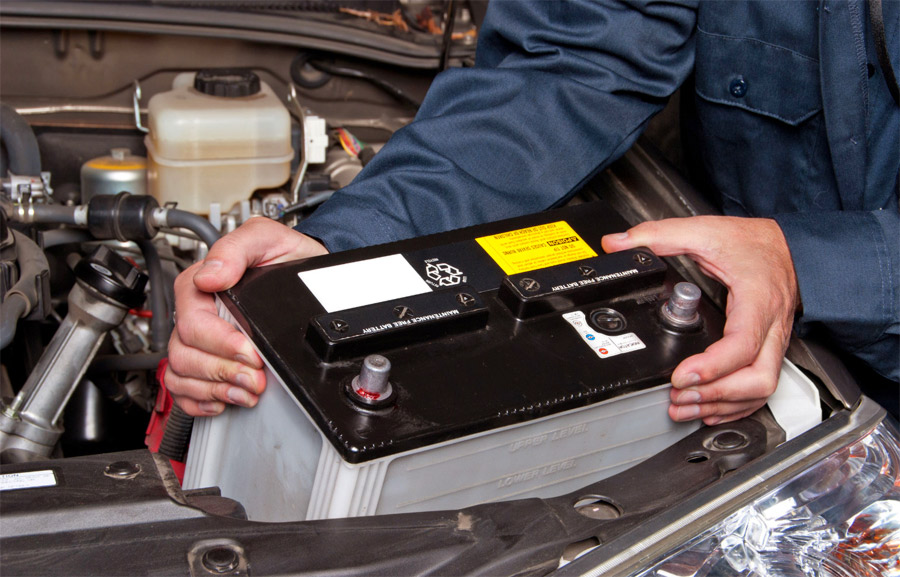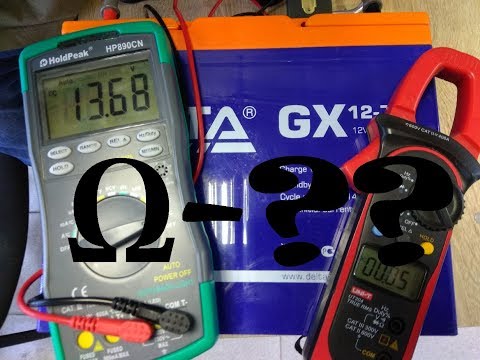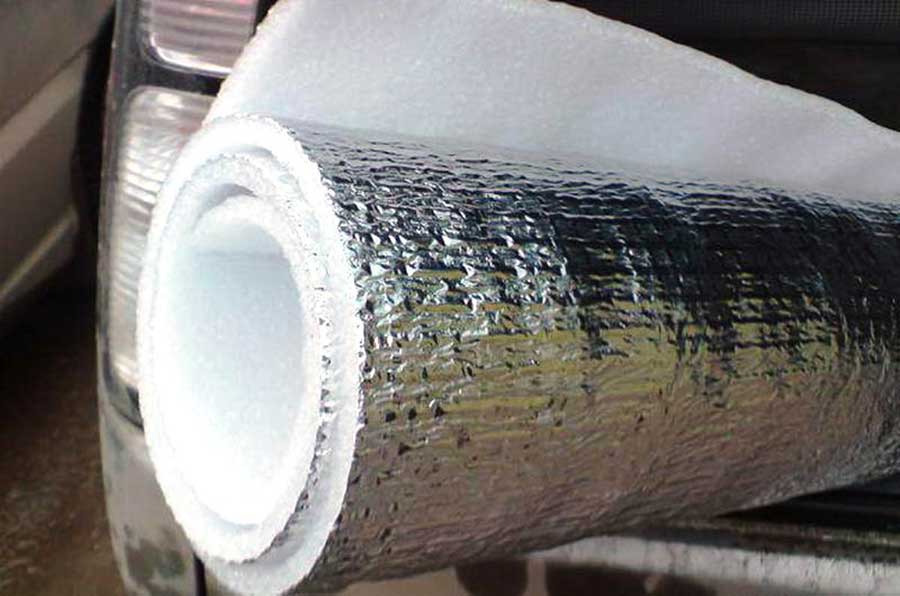
How do you know when it's time to change your car battery?
Content
The battery is subject to natural wear as a result of electrolyte boiling, sulfation and destruction of active plates. Under normal operating conditions, these processes occur slowly and batteries serve in cars 3–5 years.
With rare short trips, additional load and without timely maintenance, the battery life is reduced, which leads to capacity drop, inrush current and the impossibility of starting the internal combustion engine. Most often, problems appear during the cold season due to increased load on the battery and reduce its charging efficiency.
About how the car battery dies, what signs indicate this and how to understand when it is time to change the battery in a car - we will tell in this article.
the basic sign that it is time to change the battery in the car is a rapid drop in voltage even under a small load during parking (provided that the current consumption in this mode is within the normal range - no higher than 80 mA). Even if the voltage of a run-down battery was raised to 12,7 V using a charger, but after installing it on the car and parking for more than 12 hours, it again drops to 12,5 and below - change it. Otherwise, at some point (often on a frosty morning) you will not be able to start the internal combustion engine. But there are other indicators and tests that will help determine whether to buy a new battery.
Symptoms of a dying battery - when to look under the hood
Signs of battery wear on a car are usually the most obvious when starting the engine и with increasing load to the onboard network. Some of them may indicate both the exhaustion of the resource of the battery itself, or simply a drop in the charge level due to a breakdown of the generator or increased power consumption caused by incorrect operation of the equipment.
The main symptoms of a dying car battery are:

Symptoms of a tired battery on the example of Lada Vesta: video
- the starter hardly drives the flywheel, especially at low temperatures, the speed obviously slows down when the key or start button is held for more than 2-3 seconds;
- the brightness of the glow of the headlights and the illumination of the interior drops sharply when the engine is turned off, and after the start it increases abruptly;
- the battery goes to zero after 12 hours of parking;
- idle speed drops when additional consumers are turned on, and when the air conditioner is turned on, the engine sometimes stalls;
- turning on the consumer (dimensions and headlights, audio system, compressor for pumping wheels) in the parking lot with the engine turned off causes a noticeable battery voltage drop;
- When the engine is off, the wipers, windows, and power sunroof move too slowly and with difficulty.
When identifying the described symptoms, you need to look under the hood and inspect the battery. The obvious signs of battery failure and their causes are listed in the next section.
Signs and causes of a dying car battery
A battery that has exhausted its life can fail at any time. In addition to the fact that the car may not start when it gets cold or after several short trips, the battery case may be destroyed with electrolyte leakage, malfunctions in the on-board electronics due to voltage drops, etc. In addition, it is essential increasing load on the generator. Having noticed the signs of a dying battery, you need to take measures to eliminate the causes of their appearance, and then charge the battery or replace it.
Signs of a dying car battery and their causes:
| Battery problem | Why is this happening | What to produce |
|---|---|---|
| The battery drains quickly |
|
|
| Gray light plaque on the plates | Deep charge or suboptimal battery charge mode. | charge with desulfation of the battery or replace the battery. |
| Hull bulged (no damage) |
|
|
| Cracks and streaks on the battery case |
| Replace battery. |
| Low voltage and electrolyte density after charging | Sulfur from the electrolyte turns into lead sulfate and settles on the plates, but cannot dissolve back due to excessive crystal formation, so the density of the electrolyte decreases. It is also possible for the electrolyte to boil away. | Charge the battery and adjust the density of the electrolyte. If that doesn't help, change the battery. |
| Electrolyte dark or with sediment | Destruction of the active mass of the plates or the formation of insoluble sulfate. | The battery needs to be replaced as it is beyond repair. |
| Plaque on battery terminals | Boiling of the electrolyte during charging due to battery sulfation. | Top up with distilled water, charge with desulfation, if it doesn’t help, change the battery. |
Battery life depends on its type:
- conventional lead antimony and low antimony - about 3-4 years;
- hybrid and calcium - about 4-5 years;
- AGM - 5 years;
- gel (GEL) - 5-10 years.
Signs of car battery wear can appear earlier with short runs, frequent starts, a lot of extra equipment, such as an off-the-shelf infotainment system with higher power amplifiers and speakers, or malfunctions that result in undercharging or overdischarging. At the same time in good conditions and with timely maintenance Battery can last 1,5-2 times longer due date.
How to check if the battery needs to be changed
Definitely, the need to replace the machine battery is indicated only by damage to the case, destruction or short circuit of the plates. In other cases, you can try to extend the life of the battery by trying to charge it and testing it. For a preliminary assessment of the wear of a machine battery before testing, you need:
- Measure voltage. On a serviceable battery with a normal residual resource, it should be not lower than 12,6 V when measured 3 hours after charging. Lower values indicate critical wear, and if the voltage does not reach 11 VThat is, short circuit probability one of the cells.
- Check electrolyte density. Normally, on a properly charged battery, it should be about 1,27–1,28 g/cm3 at room temperature. You can also check the density on a discharged battery, but then to assess its condition you need to compare the obtained values with the tabulated ones. The normal dependence of density on temperature and charge is shown in the illustration.
- Check electrolyte level. Normally, the electrolyte should have a level 1,5–2 cm above the edge plates. Many batteries have level marks inside the service holes, in some models it is displayed using a float indicator. If the level is below normal, it can be restored with distilled water.
- Check sulfation. In serviced batteries with plugs, by unscrewing them, you can visually inspect the plates. Ideally in a charged state on them there should be no light gray coating, a small amount is acceptable, but deposits over most of the area indicate a high degree of wear on the car battery.
Electrolyte density depending on temperature and charge level, click to increase
Lead sulfate on battery plates, click to enlarge
It is possible to reliably identify the wear and tear of car batteries using diagnostic equipment or tests.
Test 1: Standard load test
It is not always possible to find out the remaining battery life only by external signs and voltage. A more correct approach is a load test. The easiest way to identify a dying battery is to load it with standard electrical appliances. For the test you need:
- After recharging or a long trip, wait from 1-2 hours until the battery voltage returns to normal.
- Turn on headlights.
- Wait about 30 minutes.
- Start the motor again.
If the battery is also serviceable, and the motor is in order, then it will start on the first try, the starter will spin briskly. With a worn battery, starting will be difficult (or completely impossible) and you should hear how the starter works “in tightness”, its speed sags.
Test 2: Checking with a load fork
You can quickly determine that it is time to change the battery using a load plug. The test is carried out on a charged battery in this order:

Battery test with a load plug: video
- Connect the load plug with an unloaded terminal and measure the open circuit voltage (OCV).
- Connect the load plug with the second terminal and measure the voltage under high current load.
- Keep the plug connected for about 5 seconds and monitor the voltage changes on its scale or screen.
In good condition, a charged battery should deliver 12,6-13 volts with no load. After connecting the plug, the voltage will sag, and by the magnitude of the drawdown, you can approximately estimate the degree of wear. On a fully serviceable machine battery 55–75 Ah, a drop of at least 10,5–11 V should occur.
If the battery is “tired” but also usable, then the voltage in the load will be 9,5–10,5 V. If the values fall below 9 V, then such a battery will soon have to be replaced.
The nature of the change in readings is the second indicator of wear. If under load the voltage on the device is stable or even slightly increases, then the battery is working. A constant decrease in voltage indicates that the battery is already worn out and does not hold the load.
Test 3: Load capacitance measurement
Battery capacity is measured in Ah and is indicated on the battery. This value is obtained by discharging the battery with a load of 0,05C or 5% of the nominal capacity, i.e. 2,5A for 50Ah or 5A for 100Ah. you need to charge the battery, and then proceed in the following order:
- Measure the NRC of a charged and settled battery for several hours.
- Connect a load of the appropriate power of 0,05C (for a passenger battery, a 12 V light bulb up to 30–40 W is suitable).
- Leave the battery with a load for 5 hours.
- Disconnect the load, wait a few minutes for the NRC to stabilize and measure it in order to assess the degree of battery voltage.
- Determine the percentage of the discharge. For example, if the battery voltage has a level of 70%, then a fully charged battery is discharged by 30%.
- Calculate the residual capacity using the formula Comp. = (load in A) * (time in hours) * 100 / (discharge percentage).
Dependence of voltage on the degree of battery discharge, click to enlarge
If the lamp consumes 3,3 A, and a battery with a capacity of 60-65 A_h is discharged by 5% in 40 hours, then Comp. = 3,3_5_100 / 40 = 41,25 A_h, which indicates the presence of noticeable, but also acceptable wear. Such a battery will work, only in severe frost it may be difficult to start.
Test 4: Measurement of internal resistance
Also, one way to understand that the battery on a car is dying is to measure the internal resistance of the battery.
Testing the battery with a professional tool Fluke BT510
This can be done directly and indirectly:
- Straight. A special tester is used, amateur (for example, YR1035) or professional (for example, Fluke BT510), which directly indicates the value of internal resistance.
- Indirect. The value of internal resistance is determined by the voltage drop at a known load.
To indirectly calculate the resistance, you will need a multimeter or voltmeter and a load with a known current consumption. A 60 watt machine light bulb is best.
How to check battery life by calculating resistance:
- On a charged and settled battery, NRC is measured.
- A load is connected to the battery, which is maintained until the voltage stabilizes - usually about a minute.
- Battery voltage is measured under load.
- The magnitude of the fall of the NRC (ΔU) is calculated.
- The resulting ΔU value is divided by the load current (I) (5 A for a 60 W lamp) to obtain the resistance value according to the formula Rpr.=ΔU / ΔI. ΔI will be 5A for a 60W lamp.
- The theoretical internal resistance of the battery is calculated by dividing its nominal voltage by the specified starting current according to the formula Rtheor.=U/I.
- The theoretical value is compared with the practical one and the state of the battery is determined by their difference. If the battery is in good condition, then the difference between the actual result and the theoretical one will be small.

Calculation of the internal resistance of the battery: video
For example, let's take a battery with 60 A * h and a starting current of 600 A, charged up to 12,7 V. Its theoretical resistance Rtheor. = 12,7 / 600 = 0,021 Ohm or 21 mOhm.
If before the NRC it was 12,7 V, and when measured after the load - 12,5 V, in the example it will look like this: Rpr.=(12,7-12,5)/5=0,04 Ohm or 40 mOhm . Based on the results of measurements, it is possible to calculate the starting current of the battery, taking into account wear according to Ohm's law, that is, I \u12,7d 0,04 / 317,5 \u600d XNUMX A (from the factory XNUMX A)
If before the measurements the voltage was 12,65 V, and after - 12,55, then Rpr. = (12,65-12,55) / 5 = 0,02 Ohm or 20 mOhm. This converges with the theoretical 21 mΩ, and according to Ohm's law we get I \u12,67d 0,021 / 604 \uXNUMXd XNUMX A, that is, the battery is in perfect condition.
Also, one way to calculate the internal resistance of a battery is by measuring its voltage at two different loads. It's on video.
Answers to frequently asked questions
How to understand that the battery is old?
You can determine that the battery is badly worn out by 4 signs:
- the service life of the battery exceeds 5 years (the date of issue is indicated on the cover);
- The internal combustion engine starts with difficulty even in warm weather, a drop in starter speed is felt;
- the on-board computer constantly indicates the need to charge the battery;
- 3 hours of parking with the included dimensions and the ICE muffled is enough for the ICE to start with great difficulty or not start at all.
What are the signs that it is time to change the battery in the car?
The critical wear of the machine battery is evidenced by:
- high speed charging and discharging;
- increased internal resistance;
- battery voltage drops very quickly under load;
- the starter does not turn well even in warm weather;
- the case has cracks, electrolyte smudges are visible on the walls or cover.
How to check the battery for suitability?
You can quickly check the battery for suitability using a load plug. The voltage under load must not fall below 9 V. A more reliable check is carried out by measuring the internal resistance using special devices or an applied load and comparing the actual value with the reference.
How to determine battery wear using a charger?
Advanced battery chargers, such as the Berkut BCA-10, have a test mode that allows you to use it to determine the starting current, internal resistance and assess the degree of wear. Ordinary memory can determine wear by indirect signs: active gas release in one of the cans or vice versa, its complete absence in one of the compartments, the absence of a current drop as it is charged with a constant voltage, overheating of the case.
